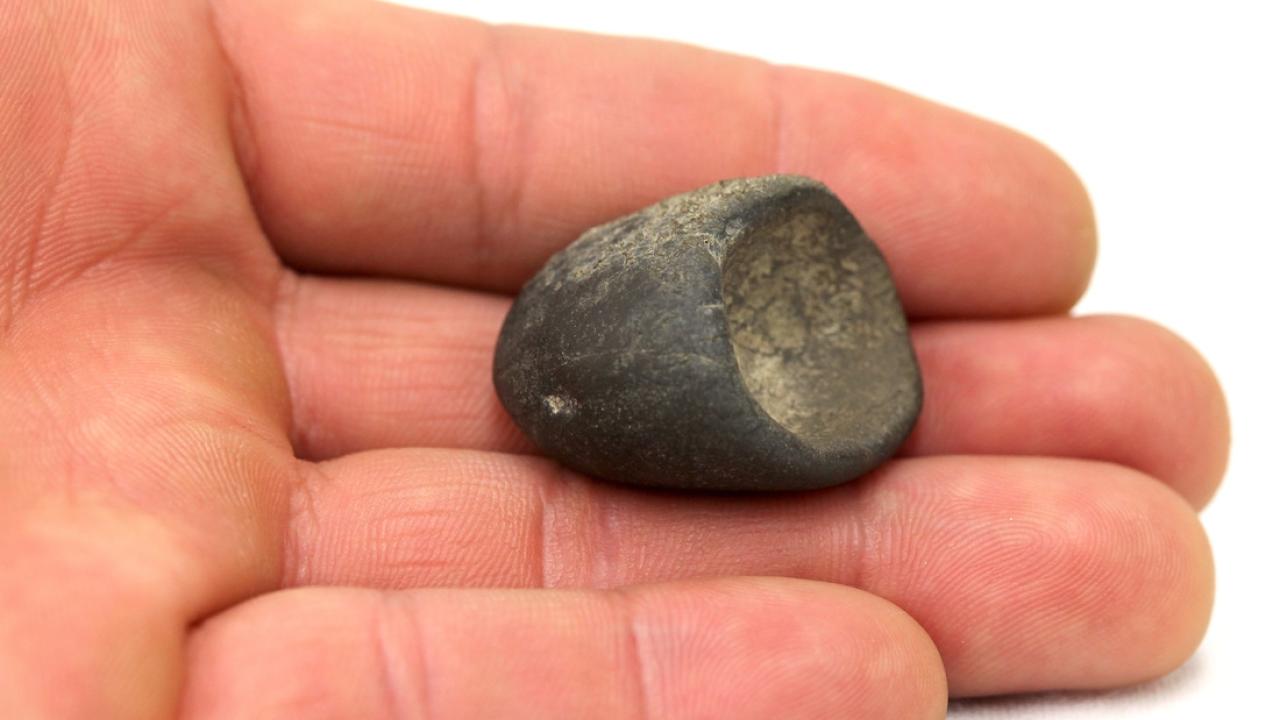
July 9, 2015: Miniature Mortar
A note left with this artifact indicates that, according to former UC Davis professor D.L. True, miniature mortars such as this were given to children and kept for life. In fact, miniatures of many of the tools used by adults were made as toys for children, often reflecting vocational outcomes.
Young girls would often play with dolls, which could be made from a variety of materials or drawn in the sand, and sometimes placed in miniature baby cradle baskets. Among younger girls, miniature digging sticks would be used to dig up grasses to feed their dolls. Miniature digging stick weights, mortars and pestles, and baskets could accompany the process. Girls would often go out with their mothers and were allowed to play as their mothers worked, over time learning from their mothers the techniques needed to turn play into work. Before learning to weave, small versions of baskets were made for young girls to use, though the type of basket and the associated use varied by culture.
Young boys would also play with dolls, but would more often mimic hunting, fishing, and war. Miniature bows and arrows were sometimes hung above an infant as soothing toy, and small functioning bows and arrows were used by boys for target practice. Among some fishing cultures, such as the Yurok, boys would be given small boats, which they were forbidden from using in actual waterways, instead having to build inland ponds. Pretending to catch salmon, they boys would hang salmonberry from the roofs of their play houses as “salmon” being hung up to dry.
Despite having different toys and games to reflect the division of labor by gender, girls and boys would play together, too. Among the Pomo, girls and boys worked together to make play dance houses, with boys collecting materials and tying the frames and girls mixing the clay and applying the dirt roof covering. Additionally, the lines that divided the play of boys and girls were not absolute. In northern Baja, girls would sometimes have toy throwing sticks, used to hunt rabbits, made specifically for them.
What constituted play varied, of course, between cultures. In some cultures, the bull-roarer, an instrument sounded by spinning a weighted airfoil around by a string, was a play toy for children, though in other cultures, children were forbidden from using bull-roarers lest misfortune fall upon them.
From Dr. True’s analysis, this miniature mortar from Colusa County likely belonged to girl.
The larger variety of mortar and pestle, symbolized by this miniature, was an important technology in seed processing, though it could also be used to crush minerals and plants for the manufacture of pigments. Some stand-alone mortars were smoothed on the exterior, though others were left with rough, natural exteriors. Other mortars were worked into bedrock and were immobile. Hopper mortars, with low shallow bowls, were used in conjunction with mortar hopper baskets, baskets with the bottoms removed used to contain the pounded material.